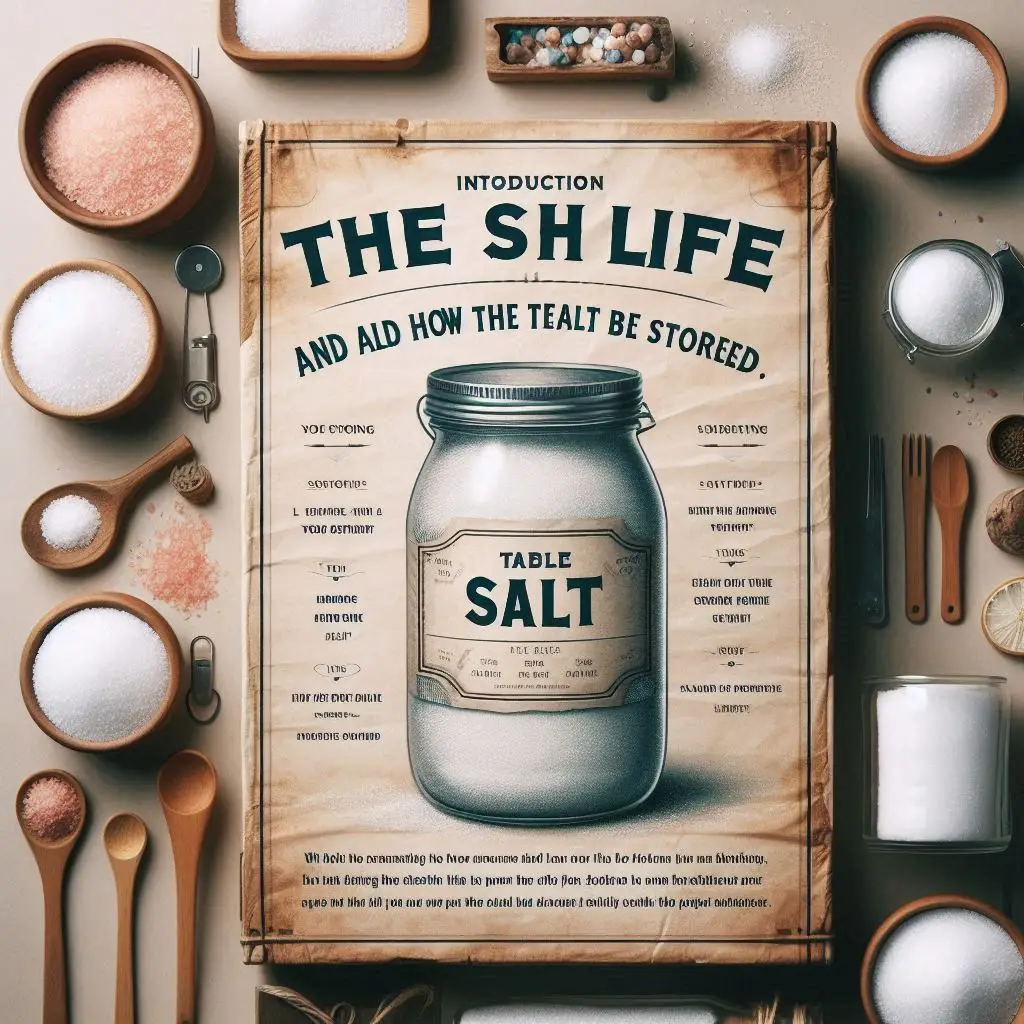
Table Salt Shelf Life & Storage Guide – Dec 2025
Short Intro:
Table salt is a kitchen essential known for its long shelf life. Proper storage ensures it stays fresh, clump-free, and ready for culinary or preservation use.
What You’ll Learn:
- Factors contributing to table salt’s long shelf life
- Best storage practices for maintaining quality
- How moisture, light, and heat affect salt
- Tips for preventing contamination and clumping
- Long-term strategies for household and industrial salt storage
1) Introduction
Introduction: Table salt is a staple with remarkable longevity. Table salt, chemically sodium chloride (NaCl), can last indefinitely if stored correctly. Understanding its properties and storage needs helps prevent clumping, contamination, and flavor loss, making it ideal for both household kitchens and large-scale food operations. This article explores why table salt lasts so long and the best practices to preserve its quality.
2) The Shelf Life of Table Salt
The Shelf Life of Table Salt: Table salt has a near-indefinite shelf life due to its chemical stability.
SEO Snippet: Table salt can last for years without losing quality due to its inorganic nature and antimicrobial properties.
Summary: The longevity of table salt is primarily driven by its low moisture content, inorganic chemical structure, and natural antimicrobial effects. Proper packaging further extends its usability.
Key Factors:
- Low Moisture Content: Less than 0.5% moisture prevents microbial growth.
- Inorganic Nature: No nutrients for bacteria or fungi.
- Hygroscopic Property: Absorbs moisture cautiously if sealed properly.
- Antimicrobial Effect: Natural salt inhibits microbial growth.
- Packaging & Chemical Stability: Airtight and moisture-resistant containers preserve quality.
Keywords: sodium chloride, salt preservation, long-lasting salt, antimicrobial properties, hygroscopic, shelf-stable, NaCl uses
External Links:
Novin Trades Market View and Forecast: Salt demand remains steady globally, with minor seasonal fluctuations in consumption and industrial use.
3) How to Store Table Salt
How to Store Table Salt: Proper storage is critical for maintaining quality.
SEO Snippet: Correct storage prevents salt from clumping, absorbing odors, or losing its free-flowing nature.
Summary: Store salt in airtight containers, in a cool, dark place, away from contaminants and humidity. Regular inspection and proper rotation enhance its longevity.
Best Practices:
- Dry and Airtight Containers: Prevent moisture absorption using sealed glass jars or moisture-resistant plastic.
- Cool and Dark Location: Avoid heat and sunlight to maintain texture and aroma.
- Avoiding Contaminants: Keep away from strong odors and chemicals.
- Proper Sealing: Regularly check container lids for integrity.
- Avoiding Humid Environments: Use desiccants or rice grains in high-humidity areas.
- Regular Inspection and Rotation: Follow first-in, first-out principle to maintain freshness.
Keywords: salt storage tips, clump prevention, moisture control, airtight containers, kitchen salt preservation, shelf-stable salt, safe salt storage
External Links:
Novin Trades Market View and Forecast: Proper storage maintains salt quality, preventing wastage in both domestic and industrial applications.
4) Additional Tips for Long-Term Salt Use
Additional Tips for Long-Term Salt Use: Enhance usability and reduce spoilage risks.
SEO Snippet: Keep salt dry, free-flowing, and uncontaminated for optimal culinary and industrial performance.
Summary: Incorporate moisture absorbers, maintain consistent temperature, and avoid direct contact with strong-smelling items to ensure the salt remains fresh over time.
Tips Include:
- Use silica packets or rice grains in containers.
- Avoid storing near stoves, ovens, or humid appliances.
- Separate salt from other food items prone to odors.
- Inspect periodically for caking or contamination.
Keywords: long-term salt storage, desiccant use, moisture absorption, salt maintenance, free-flowing salt, culinary preservation, NaCl longevity
External Links:
Novin Trades Market View and Forecast: Market demand favors premium, well-packaged salts that maintain quality over time.
5) Conclusion
Conclusion: The Shelf Life of Table Salt & Storage Guidelines
SEO Snippet: Understanding salt’s properties and storage practices ensures long shelf life and consistent quality.
Summary: Table salt’s long shelf life results from its low moisture, inorganic nature, and antimicrobial properties. Storing it in airtight, cool, and dry conditions prevents clumping and contamination. By following these practices, salt remains fresh and ready for culinary, industrial, and preservation purposes.
Keywords: sodium chloride longevity, safe salt storage, antimicrobial salt, salt shelf life, kitchen staple, NaCl storage
External Links:
Reader CTA: Explore more articles and visit our Reportage section for in-depth insights on commodities and food staples.
About NovinTrades
As part of its mission, NovinTrades offers a dedicated Reportage section where businesses, brands, and professionals can publish in-depth sponsored articles, analyses, and thought-leadership pieces. These reportages are SEO-optimized for maximum visibility and long-term engagement.
📍 Explore more at NovinTrades Reportages
📣 Join us on Telegram: https://t.me/novintrades

